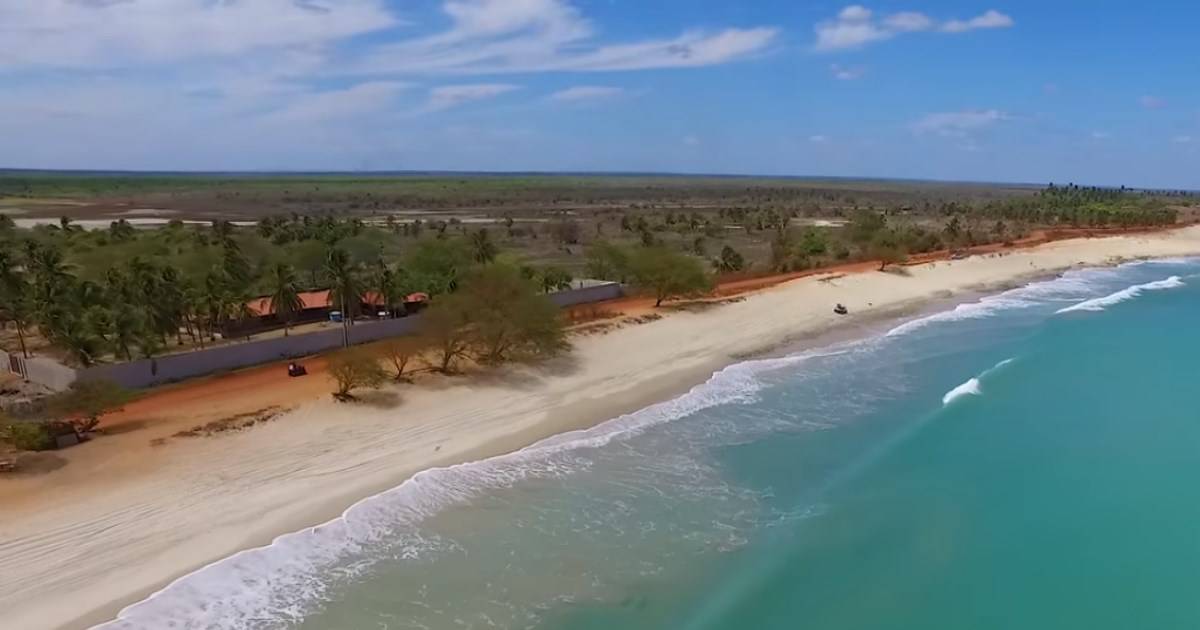Este post também está disponível em:
Português
English
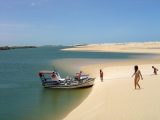
Rio Grande do Norte has wonderful tourist itineraries, with beaches surrounded by dunes, archaeological sites and religious shrines, and unique attractions that go far beyond the capital Natal.
Spectacular is one of the adjectives that easily describes Rio Grande do Norte.
Spectacular is one of the adjectives that easily describe Rio Grande do Norte.
The northeasternmost portion of Brazil holds natural and cultural riches capable of impressing any traveller, going far beyond the famous buggy rides through the dunes around Natal.
The state has attractions of all kinds, on the coast and inland, crowned with the friendliness of Potiguar and the delicious local cuisine.
For those who are planning their next trip – whether as a family, couple or with friends – the destination is a guarantee of memorable days, full of unique experiences.
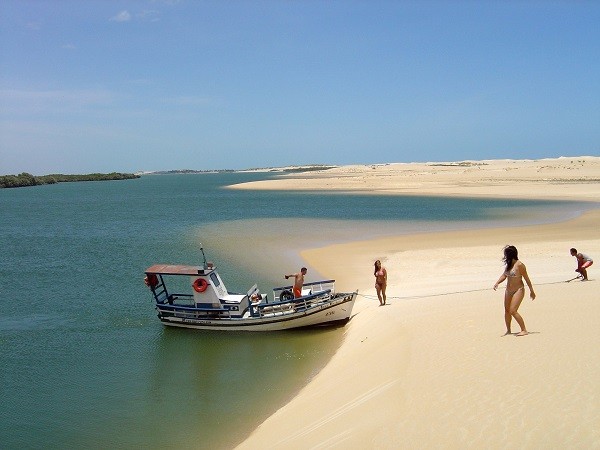
7 Passeios Imperdíveis em NATAL e Região
If you still have doubts, just check out, below, a suggested eight-day itinerary through the state and be surprised by the diversity of attractions.
“Rio Grande do Norte is one of the most complete destinations in Brazil, as it offers experiences in all tourism niches and segments,” explains Bruno Reis, CEO of the state’s tourism promotion company.
8-day Tourist Route in Rio Grande do Norte
Day 1 – Natal
Although there are special places throughout the state, you can’t give up the luxury of having the beautiful capital Natal as your starting point.

No wonder so many foreigners land there every year, and many even stay, such is the beauty of Natal.
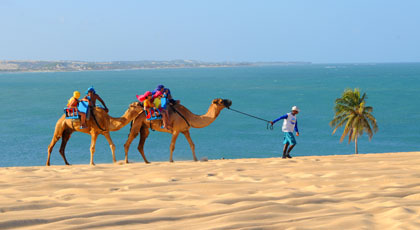

Genipabu em Natal - Guia Turismo

Natal RN - Guia de Turismo

Forte dos Reis Magos em Natal RN
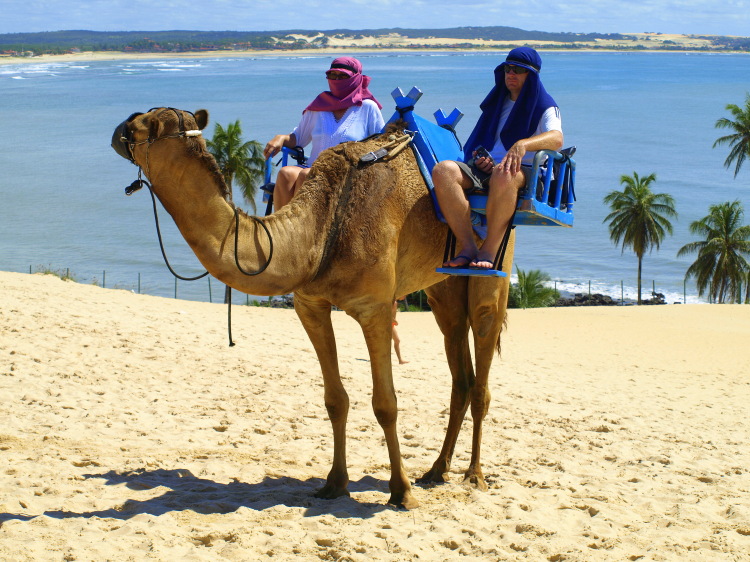
Genipabu - Dicas de Viagem

Natal RN - Guia Completo26:18

Forte dos Reis Magos em Natal RN09:06
The tip is to start the trip with a city tour, visiting places like the beach and the Redinha market, the Forte dos Reis Magos and the beaches of Forte, Artistas and Areia Preta.
Next, you should visit Parque das Dunas, the largest reserve of original Atlantic Forest in an urban park in the country. For the evening, it is worth tasting a typical potiguar dish, such as shrimp, and enjoying Beco da Lama, a street where bohemia reigns among graffiti panels with local themes.
Day 2 – South Coast of RN
Further south of the capital, still on the coast, you can visit the cashew tree of Pirangi, considered the largest on the planet.
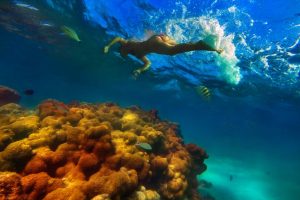
En front, there are the boats that take you to the Parrachos de Pirangi, one of the best known tours in the region: they are coral reefs that are only 1.5 kilometres from the beach, forming beautiful natural pools with clear and warm waters.
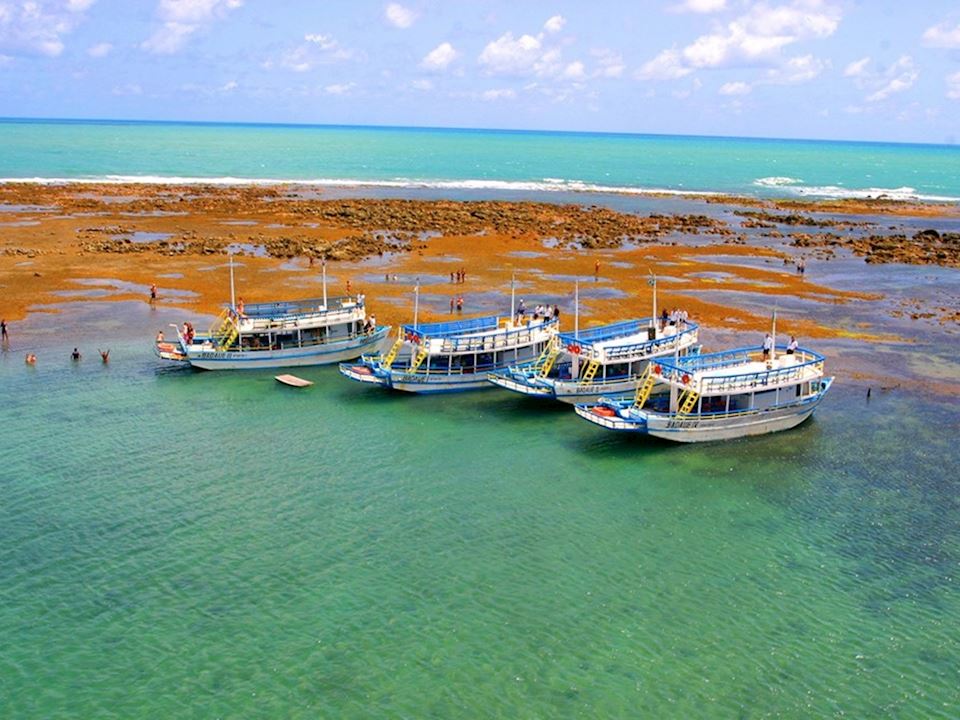
Praia de Pirangi no RN
Next, taking the road, is the Mirante dos Golfinhos, a cliff with a breathtaking view of the sea, from where you can see dolphins swimming.
Nearby, at Praia de Camurupim, thanks to the breaking of the waves on the reefs, coves of calm waters are formed, perfect for relaxing.
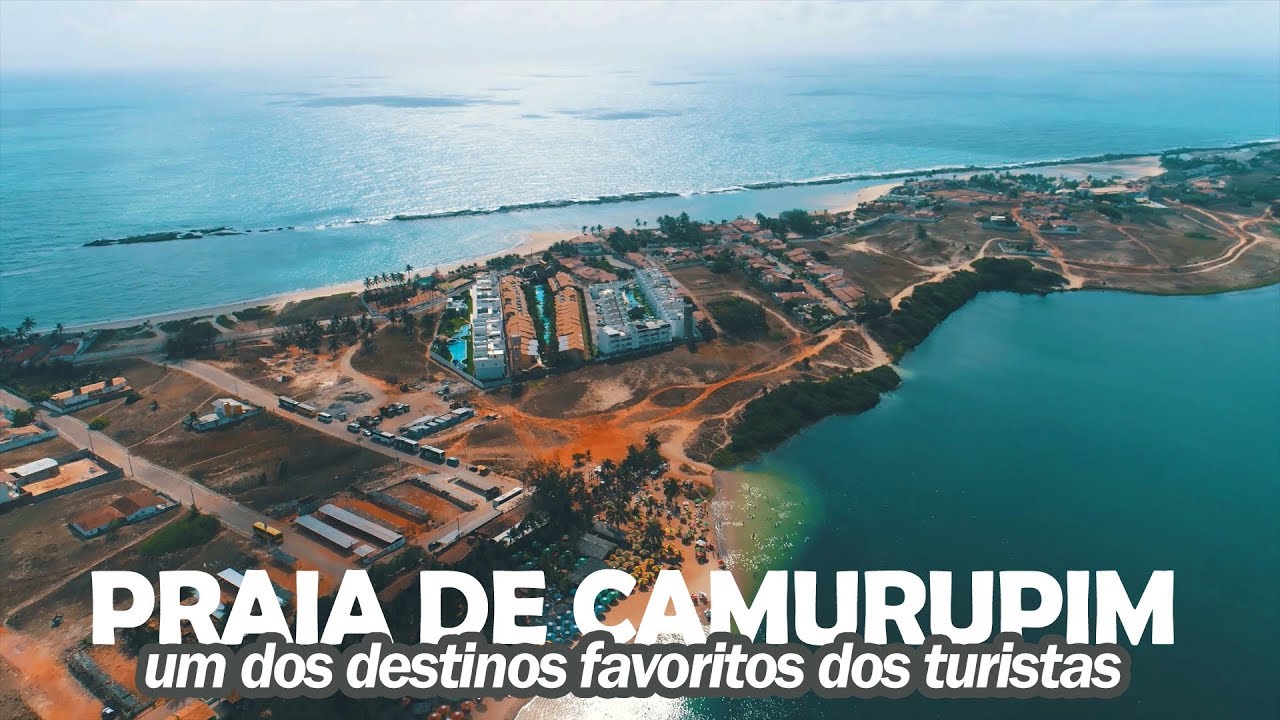
Praia de Curumupim no RN
To complete the day, a stop at the Arituba Lagoon guarantees a beautiful bath in fresh, clear water. For dinner, after a day of sightseeing, the good thing is to try a dish of carne de sol with green beans.
Day 3 – South Coast of RN
Another unmissable attraction, departing from Natal, are the buggy rides that offer a unique experience through the sands of deserted beaches, towards the Guaraíras Lagoon.
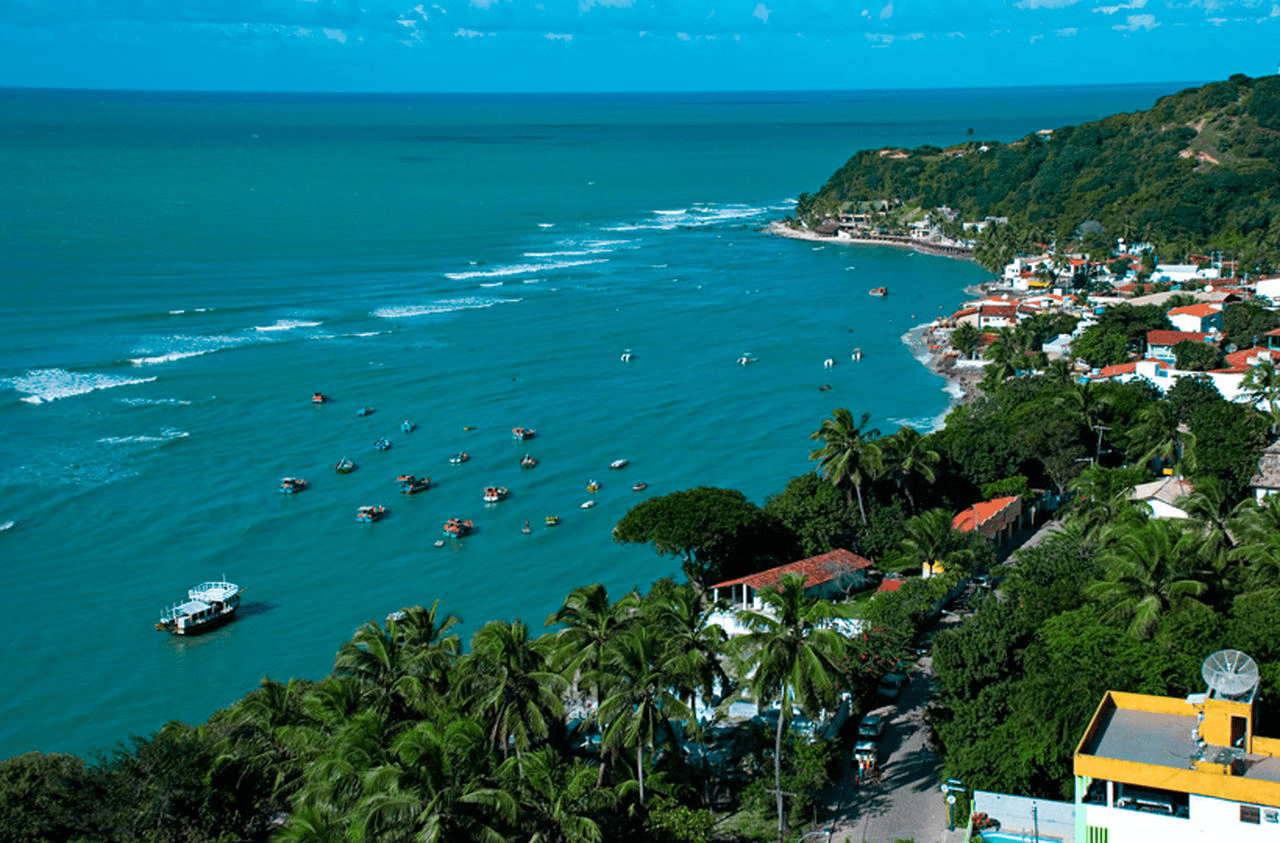
Praia da Pipa - RN
From there, a ferry leaves to the town of Tibau do Sul and its fantastic Praia da Pipa, one of the most famous seaside resorts in the state – where it is worth staying overnight to enjoy the lively nightlife, with bars, restaurants and beach clubs.
Day 4 – South Coast of RN
Day to visit the beautiful beaches of the region of Pipa.
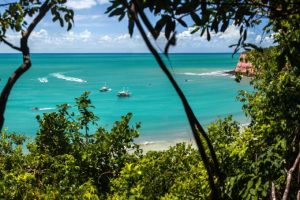
Praia do Madeiro is a great place to start, a cove reached by descending a wooden staircase in the middle of the cliff.
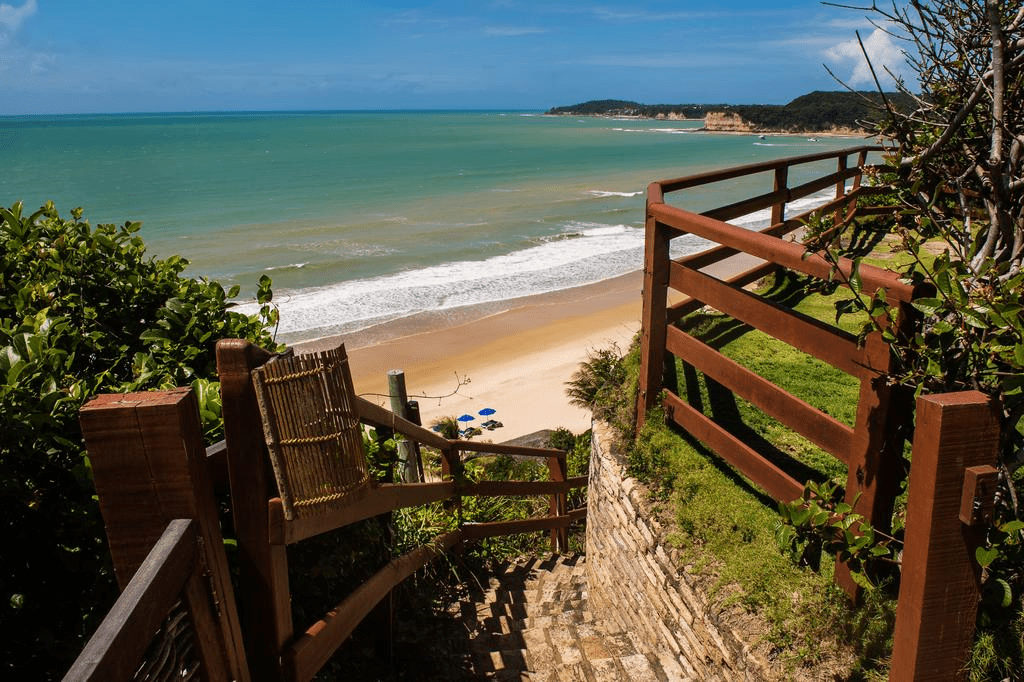
Praia do Madeiro em Pipa no RN
The small effort is nothing close to the reward: the look is jaw-dropping! Then comes Praia do Amor, which enchants with its wilder air.
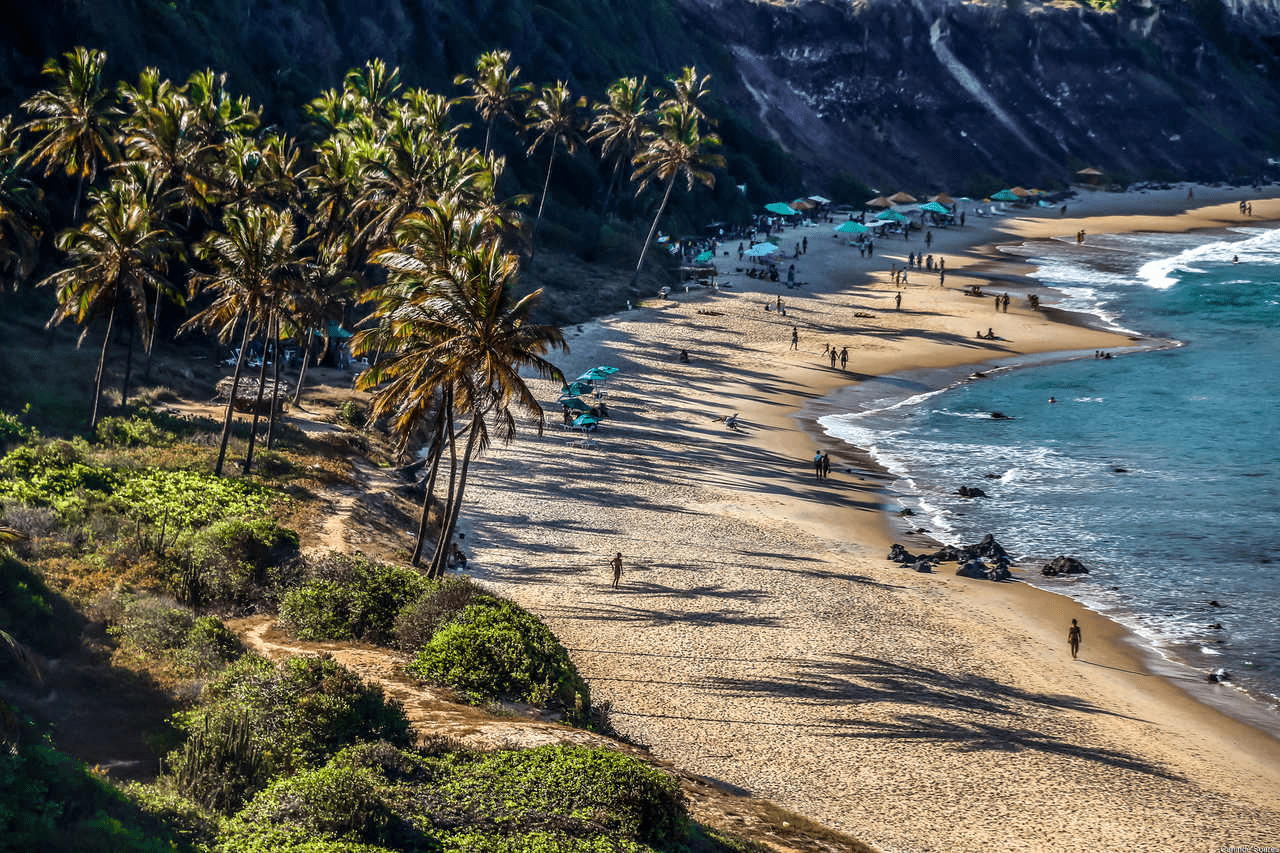
Praia do Amor no RN
Going a little further down the map, aboard a buggy or 4×4 car, is Barra do Cunhaú, the kitesurfing paradise on the South Coast.
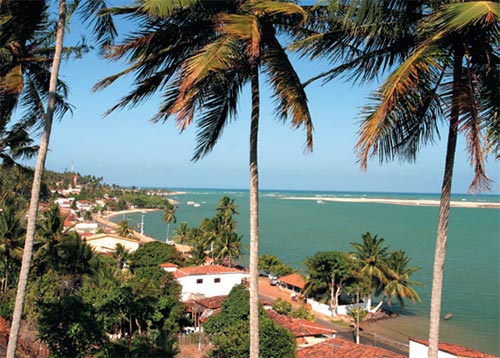

Litoral Sul do RN - Reportagem
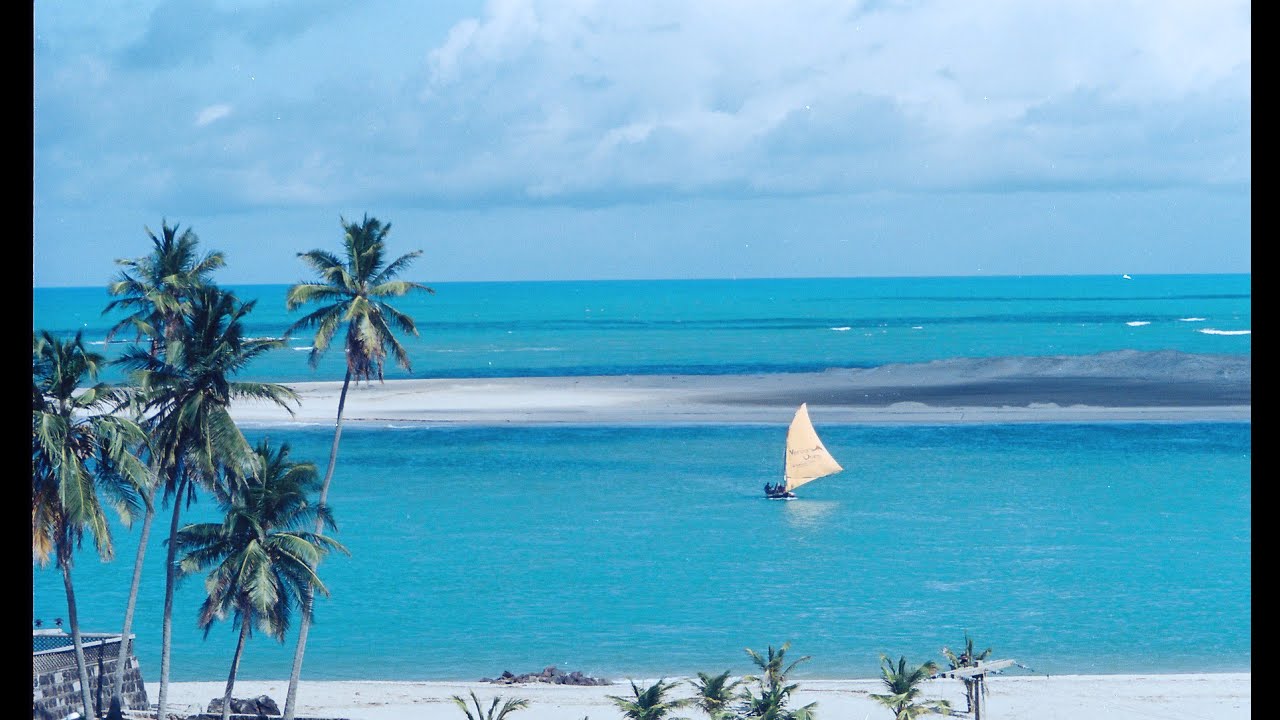
Barra do Cunhaú - Guia de Turismo08:26
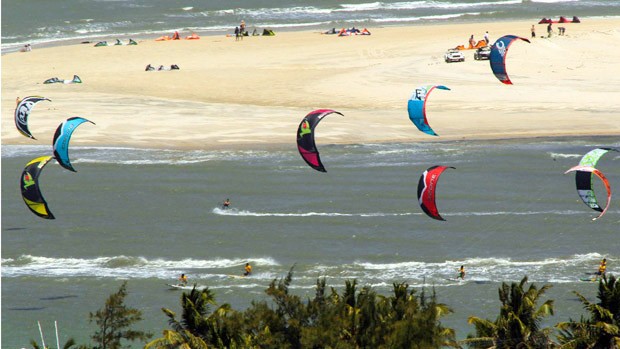
Barra do Cunhaú - Kitesurf04:22
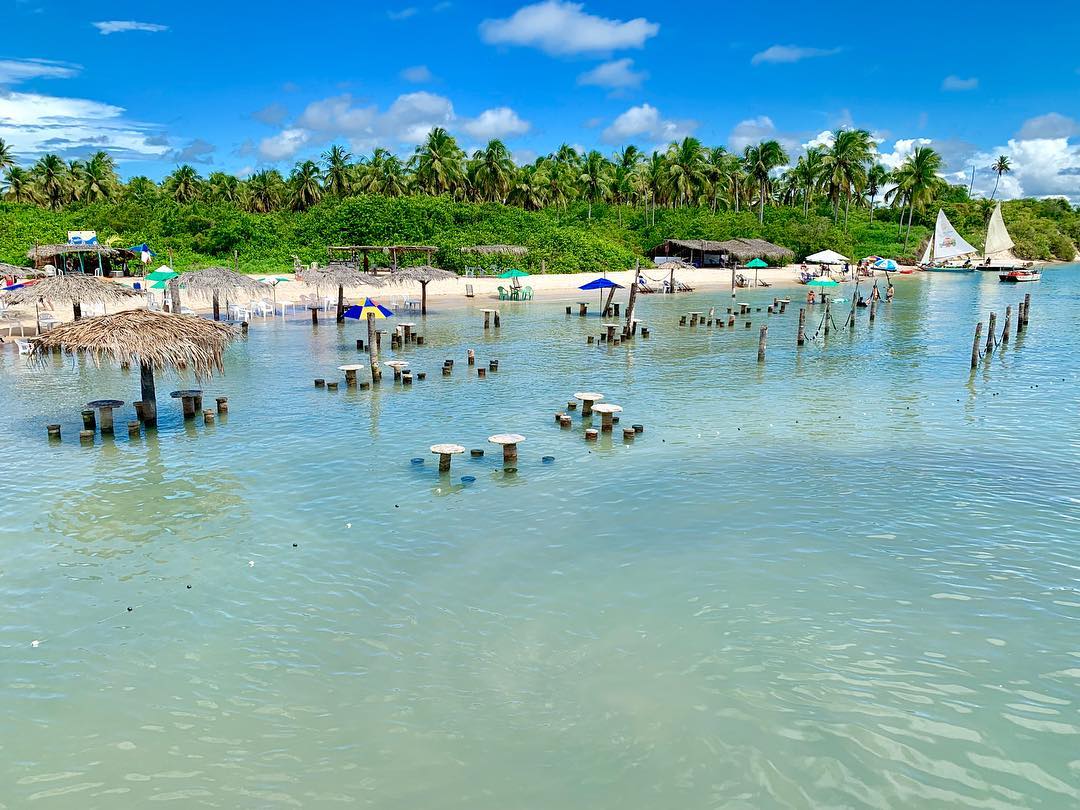
Jacuzzi natural em Barra do Cunhaú
With the meeting of the sea and the Curimataú River, the landscape on this stretch is of unrivalled beauty, mixing ocean, river, dunes, coconut palms and mangroves.
At low tide, when crossing the Curimataú by ferry, you can also reach the beach of Baía Formosa, the fishing village that revealed the surfer Ítalo Ferreira, one of the best Brazilians currently on the world surfing circuit.
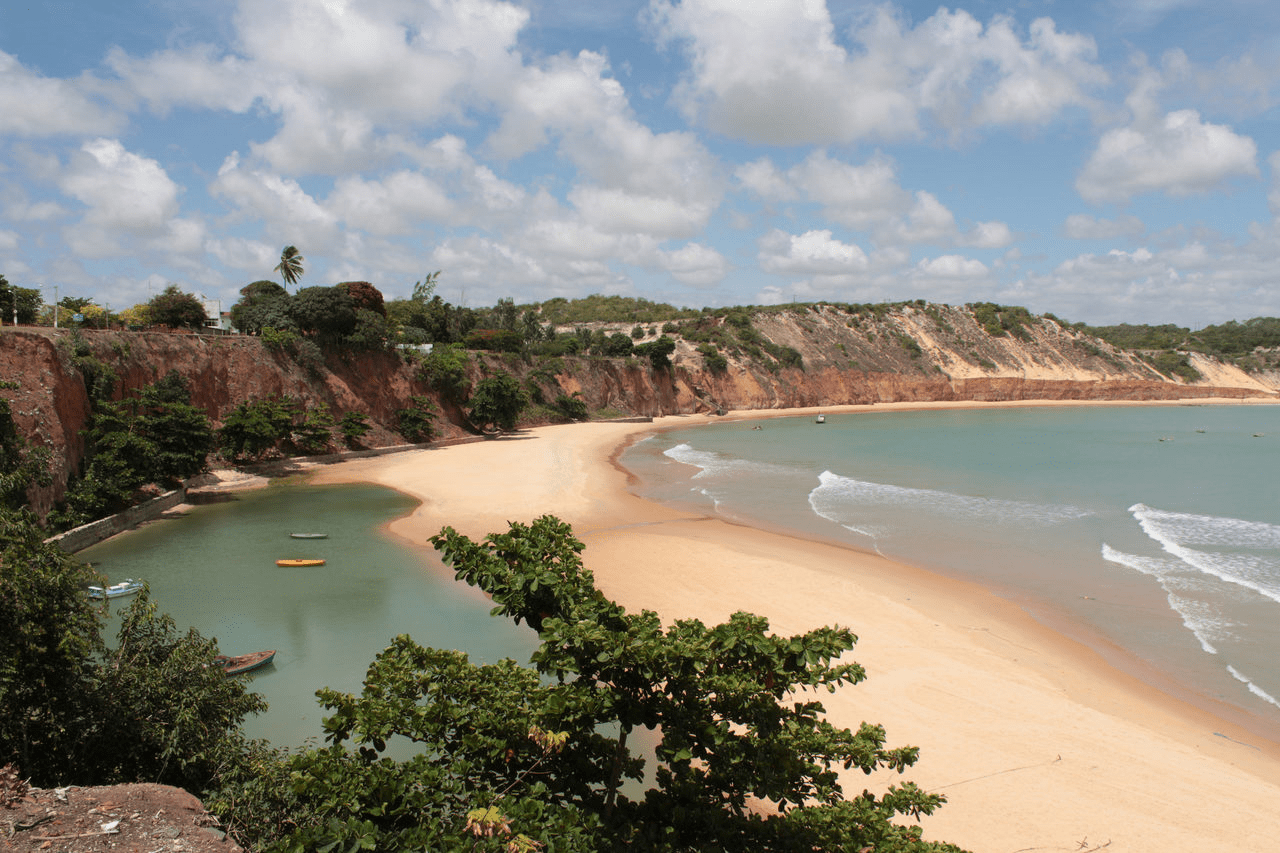
Baía Formosa – RN
To finish off, a relaxing dip in the soda-dark (but clear) waters of the Coca Cola Lagoon, in the middle of an original and preserved Atlantic Forest reserve, is a good idea.
Day 5 – Interior of RN
It is time to get to know the interior of the state, with all the cultural and historical baggage of the northeastern hinterland.
The suggested route begins with a stop in the city of Santa Cruz, where the Sanctuary of Santa Rita de Cássia is located.


Cidade de Santa Cruz no RN e Santa Rita de Cássia
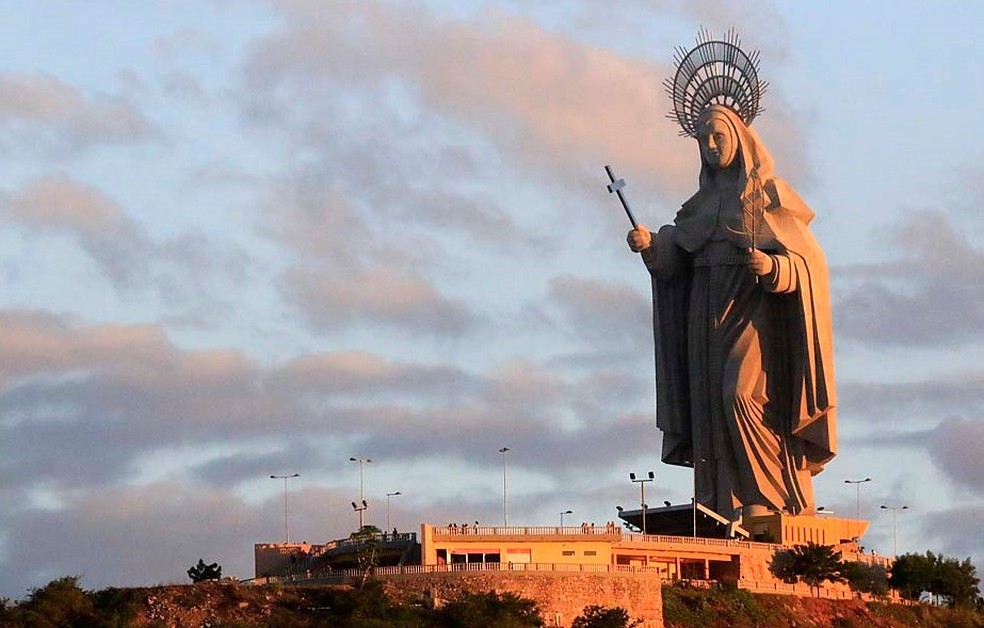
Estátua de Santa Rita de Cássia RN01:21
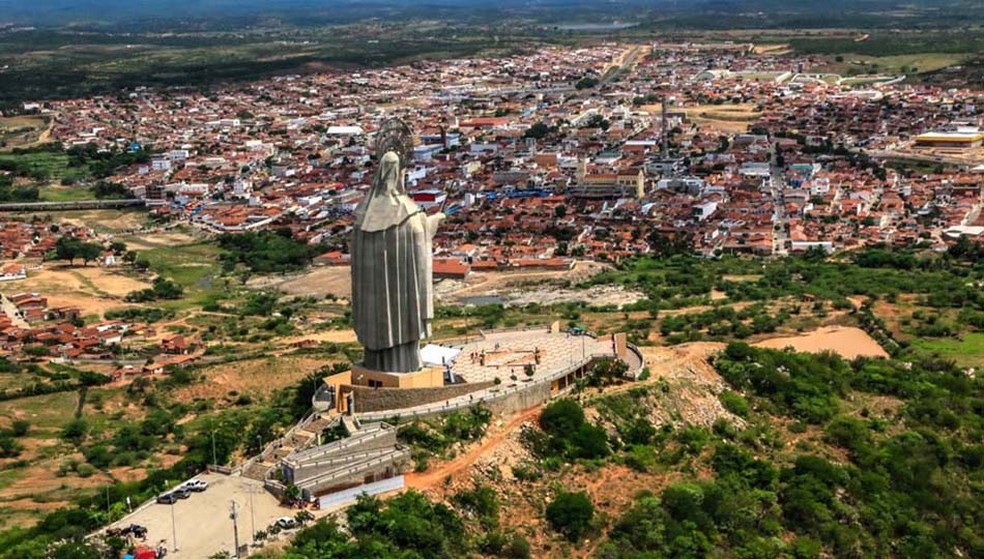
Santa Cruz no RN02:45
At 56 metres high, even more imposing from the top of a mountain, it is the largest Catholic statue in the world – 18 metres more, for example, than Christ the Redeemer in Rio.
It is possible to reach the saint’s feet by car and soon there will also be the option to go up by cable car.
From religious tourism, the trip moves on to archaeology and geology.
The next destination is the Geopark of Seridó.
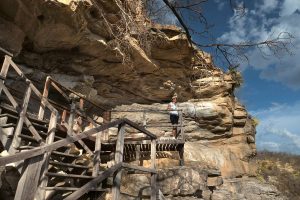
It is a surprising region, which houses fossils of prehistoric animals more than 10 000 years old, as well as cave paintings of more than 9 000 years with reddish tones depicting human and animal figures, as can be seen at the Geosítio Xique-Xique, in Carnaúba dos Dantas.
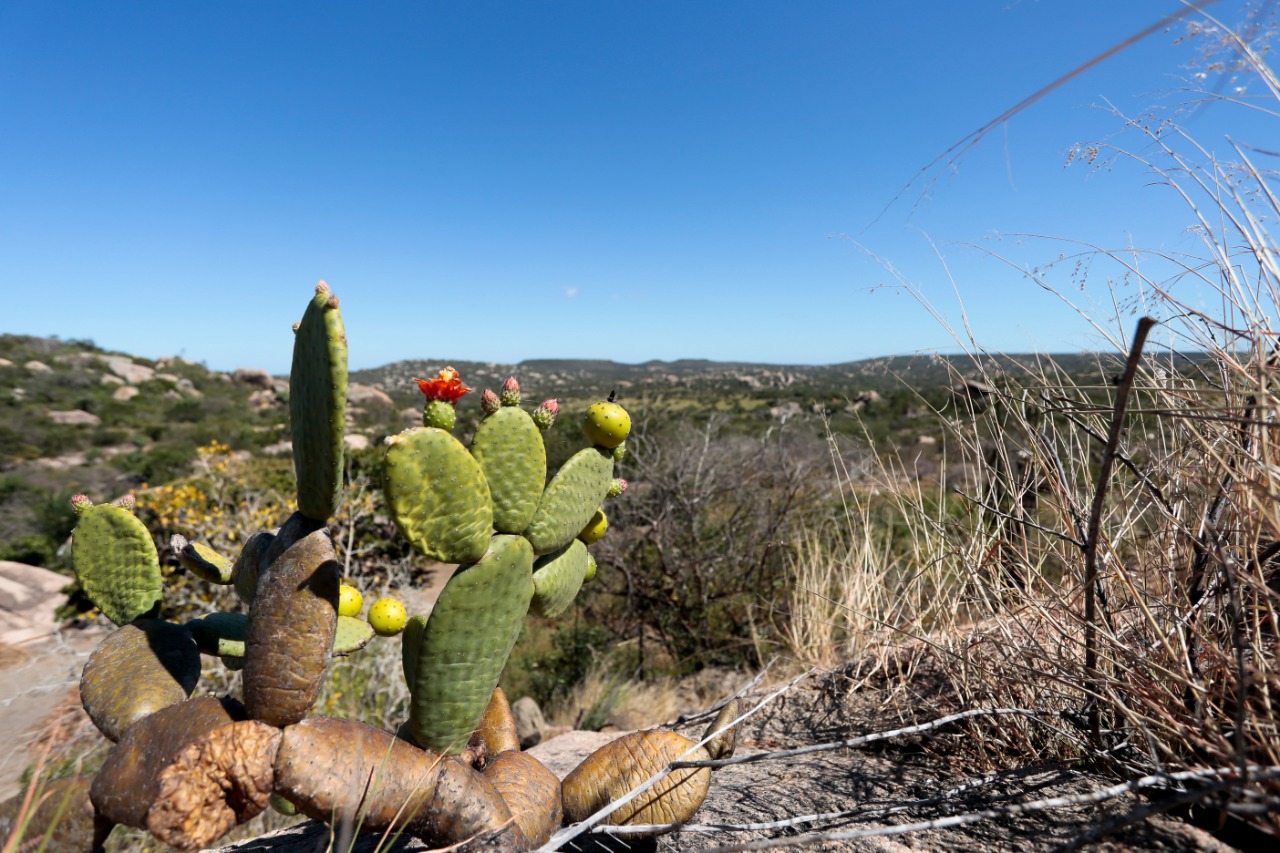

Seridó - Sertão do Rio Grande do Norte04:34
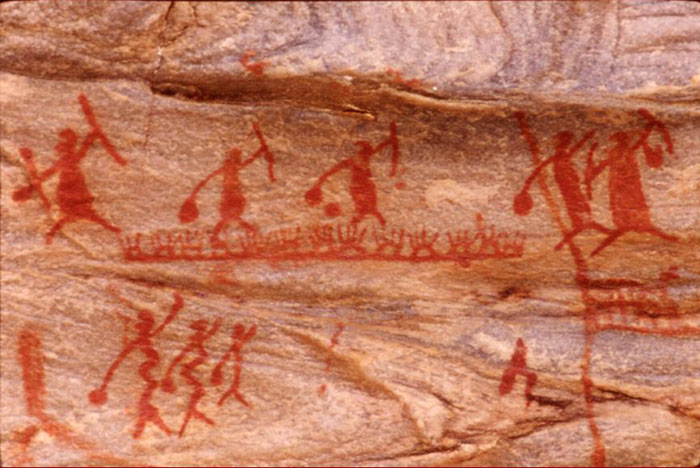
Seridó no RN
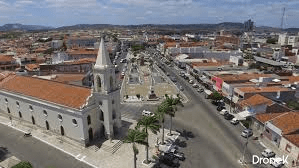
Conheça o cânion dos Apertados em Currais Novos
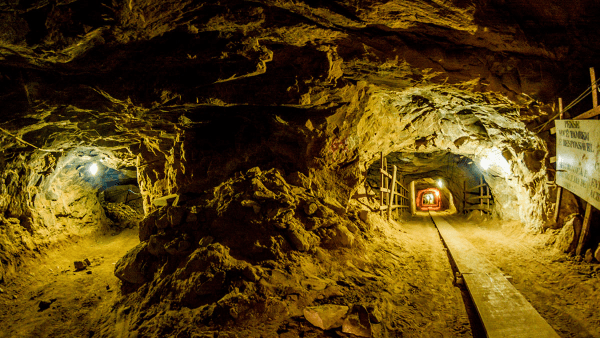
Mina Brejuí em Currais Novos RN
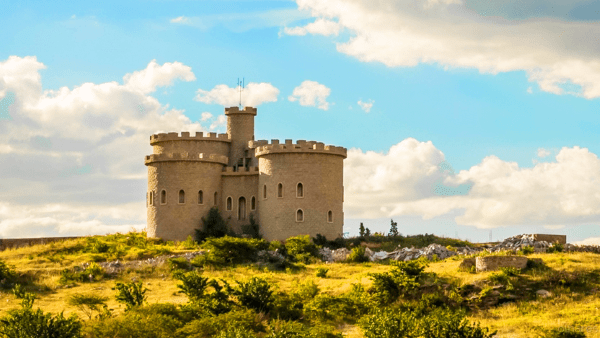
Castelo Di Bivar - Carnaúba dos Dantas RN
On the way out of the park, the recommendation is to sample the cuisine of the Seridó, with lunch in the town of Caicó. Butter cheese, buchada and roast goat are some of the typical foods.
Day 6 – North Coast of RN
Back on the coast, north of Natal are the dunes of Genipabu, one of the postcards of the state of Rio Grande do Norte, where the most traditional buggy ride and the descent of the sands by esquibunda are made.

Genipabu no Rio Grande do Norte
It’s pure fun and adrenaline! And then, to catch your breath, you can relax peacefully in the fresh water of the Pitangui Lagoon.
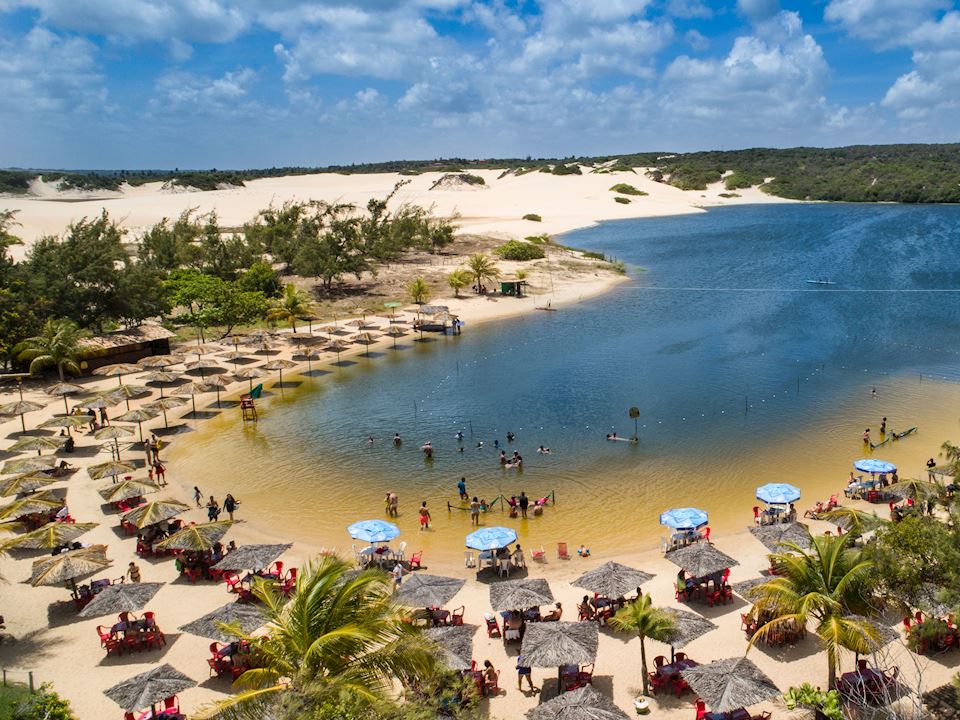
Lagoa de Pitangui no RN
Next are the beaches of Muriú and Jacumã, on the way to the next stop, the Parrachos de Maracajaú. It is a reef formation about 7 kilometres from the beach.
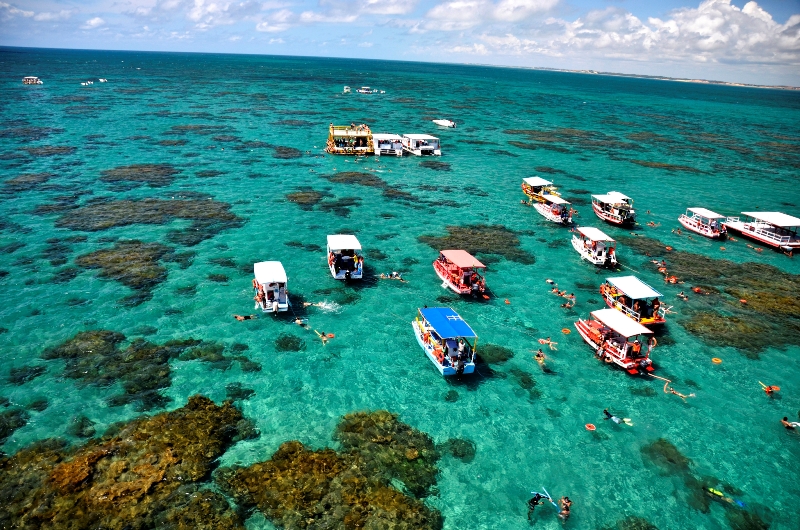
Parrachos de Maracajaú RN
The place offers incredible diving, with crystal clear water and teeming with marine life such as fish, lobsters and corals.

The journey then continues to São Miguel do Gostoso, an hour away, where it is recommended to stay overnight to enjoy the city’s haute cuisine for a special dinner.
On the way to the city, it is worth a pit stop in Touros, where Praia do Marco is located.
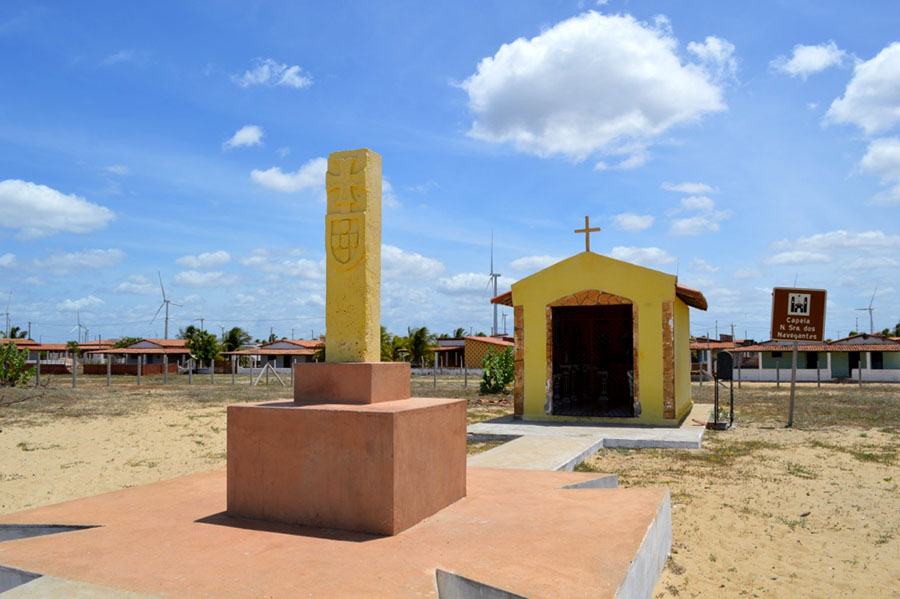
On these sands, in 1501, the Portuguese would have set the first stone marker to legitimise Portugal’s possession of the lands they had discovered, thus being the oldest monument in the country.
It is this point in Rio Grande do Norte that gave rise to the phrase “Everything starts here”, the state’s slogan.
Day 7 – North Coast of RN
Day to enjoy the good energy of São Miguel do Gostoso, considered the best beach for kitesurfing in Brazil.
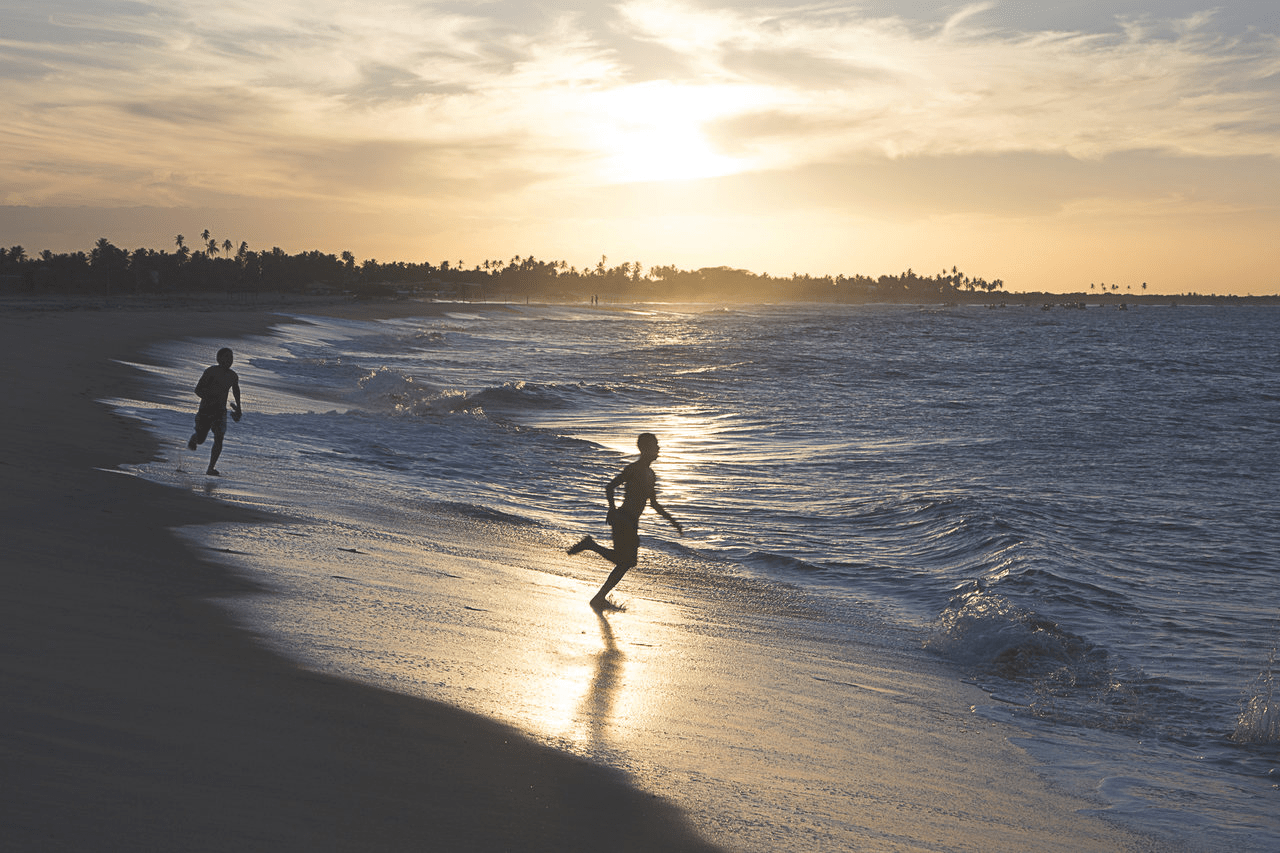
With beautiful landscapes, first-class cuisine and the rustic charm of a fishing village, the city has emerged as the point of antenados travellers. Quiet much of the year, on New Year’s Eve, especially, it becomes a trendy destination, attracting thousands of young people from the south and southeast of the country.
From São Miguel, you can also make a round trip to another fascinating place in the region, Galinhos.
Little explored by mass tourism, this little piece of the state is practically untouched, of a unique nature: a peninsula of sand, with deserted beaches and a lighthouse at the tip, surrounded by blue waters, dunes and a salt pan. The best definition of paradise.
Day 8 – Natal in RN
Back in the capital, on the last day of the itinerary, you can’t miss a quiet walk along the city’s most famous beach, Ponta Negra, and a dip in the warm waters in front of its most iconic attraction, Morro do Careca.
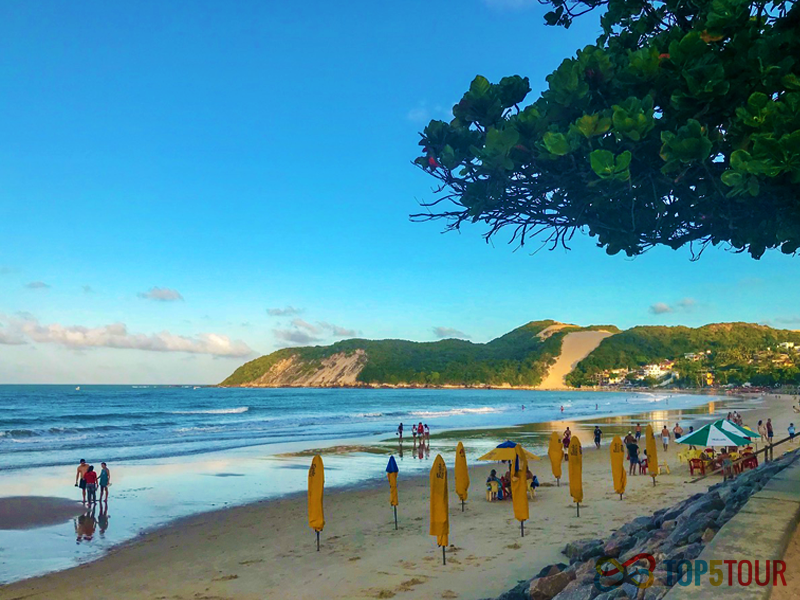
Ponta Negra em Natal no RN
And, to close this unforgettable trip with a flourish, it is worth tasting a little more of the local gastronomy in one of the many restaurants in Ponta Negra. Surely, you will want to come back…
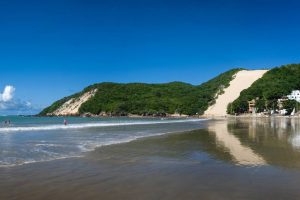
Tourist Route in Rio Grande do Norte – Tourism and Travel Guide of the Brazilian Northeast
